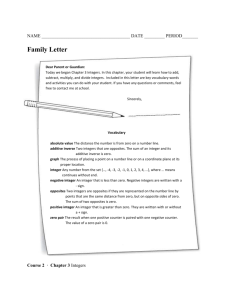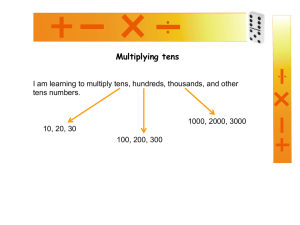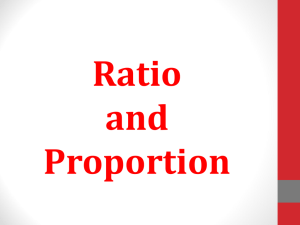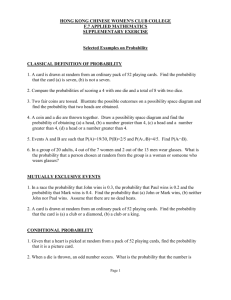Module 3 - Ed Partners
advertisement
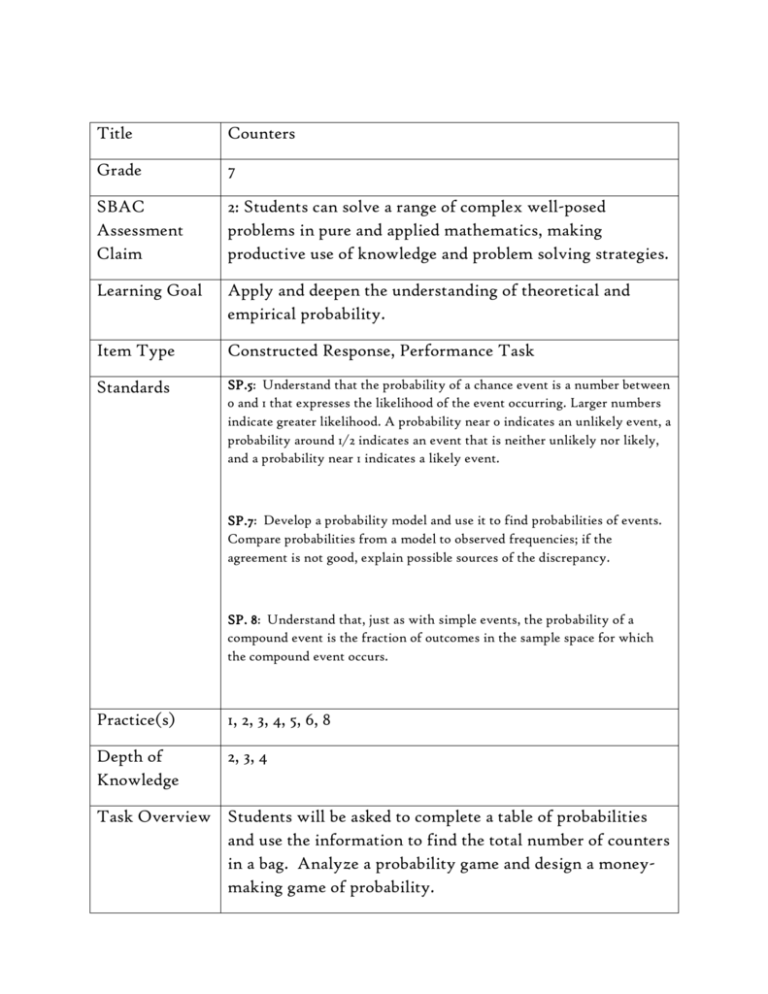
Title Counters Grade 7 SBAC Assessment Claim 2: Students can solve a range of complex well-posed problems in pure and applied mathematics, making productive use of knowledge and problem solving strategies. Learning Goal Apply and deepen the understanding of theoretical and empirical probability. Item Type Constructed Response, Performance Task Standards SP.5: Understand that the probability of a chance event is a number between 0 and 1 that expresses the likelihood of the event occurring. Larger numbers indicate greater likelihood. A probability near 0 indicates an unlikely event, a probability around 1/2 indicates an event that is neither unlikely nor likely, and a probability near 1 indicates a likely event. SP.7: Develop a probability model and use it to find probabilities of events. Compare probabilities from a model to observed frequencies; if the agreement is not good, explain possible sources of the discrepancy. SP. 8: Understand that, just as with simple events, the probability of a compound event is the fraction of outcomes in the sample space for which the compound event occurs. Practice(s) 1, 2, 3, 4, 5, 6, 8 Depth of Knowledge 2, 3, 4 Task Overview Students will be asked to complete a table of probabilities and use the information to find the total number of counters in a bag. Analyze a probability game and design a moneymaking game of probability. Claim Apply and deepen the understanding of theoretical and empirical probability. Evidence Statements Student work is characterized by: Represent all possible outcomes for a simple event in an organized way. Determine theoretical and experimental probabilities and use these to make predictions about events. (6th grade) Represent probabilities as ratios, proportions, decimals or percents. (6th grade) Develop a probability model which may not be uniform, by observing frequencies in data. Performance Tasks: modified “Counters”, Mars Task, gr.7, 2004 Counters This problem gives you the chance to: Interpret probability information Solve a probability problem in context Gina has a bag containing Red, Green, Blue, Yellow and White Counters If someone picks a counter without looking: The probability of picking a red counter from the bag is one half The probability of picking a green counter is half the probability of picking the red counter Blue, Yellow and White counters have the same probability of being picked 1. (a) Use this information to complete the table. Show how you work out your answers. Color Red Probability Green Blue 1 2 (b) There are 24 green counters in the bag. How many counters are there all together in the bag? Show how you figured it out. Yellow White 2. Gina wants to raise funds at her school fair. She plans to charge 10 cents to pick a counter from her bag without looking. She will give: 20¢ to anyone who picks a blue counter 50¢ to anyone who picks a yellow counter $1 to anyone who picks a white counter (a) Explain why Gina will lose money with this game. (b) How much should Gina charge to pick a counter so that she can make money from her game? Explain your answer. (c) Explain how Gina can change her game so that she can still charge 10¢ and make money. Points Counters The core elements of performance required by this task are to: Interpret probability information Solve a probability problem in context Section Points Based on these, credit for specific aspects of performance should be given as follows: 4 points 1 1 1 1 , , , with no extras 4 12 12 12 1 1 1 1 1 1 Shows work such as: or 2 2 4 3 4 12 1. a. Gives correct answers: 2 points b. Gives correct answer: 96 1 Shows work such as: 24 is of the total number of counters in the 4 bag. 4 24 2. a. Gives correct explanation as: In 12 tries Gina charges $1.20… but would expect to pay out 20¢ + 50¢ + $1 = $1.70 1 point 2 point 9 points 2 point b. Gives a reasonable answer from 15¢ to 25¢. 2 point c. Gives a reasonable explanation such as: The sum of the payouts is less than or equal to $1.20 AND One payout is greater than or equal to 10¢. 2 points 6 points Total Points 15
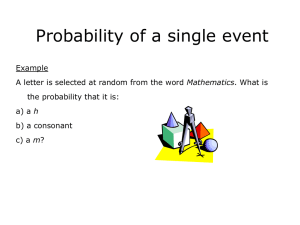



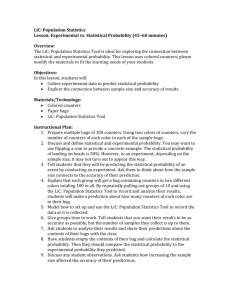
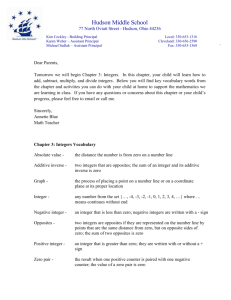
![Lesson 8_3–Synchronous Counters[1]](http://s2.studylib.net/store/data/005727557_1-25e5d6e99f500ad17373ec48380a1b3c-300x300.png)
